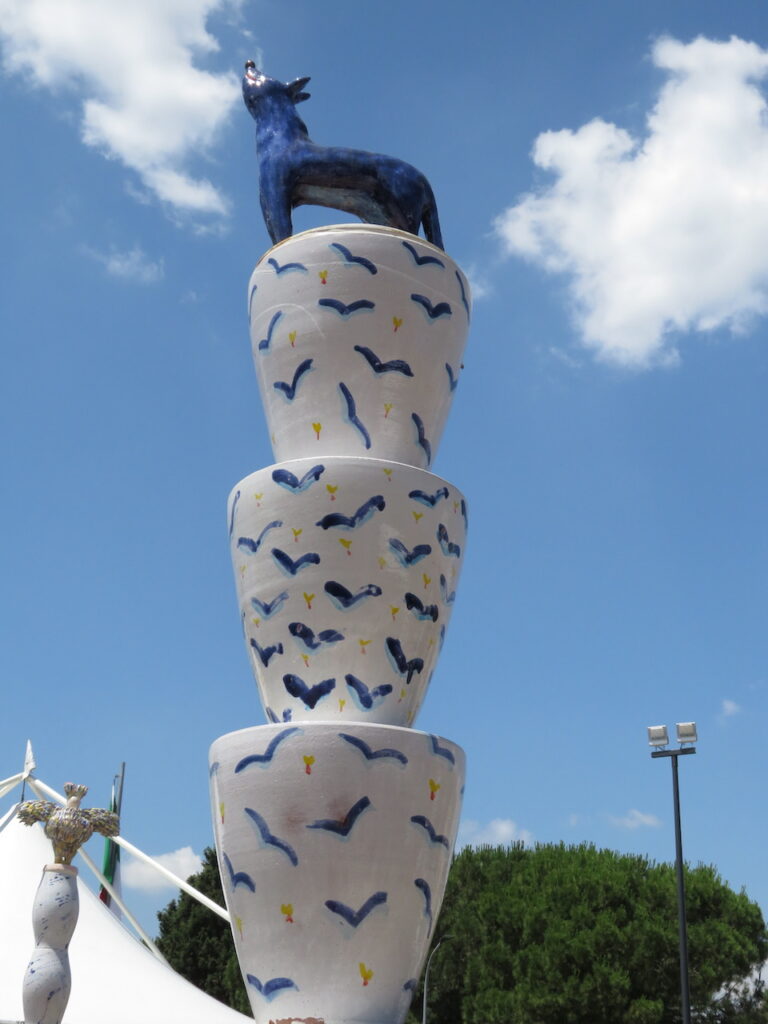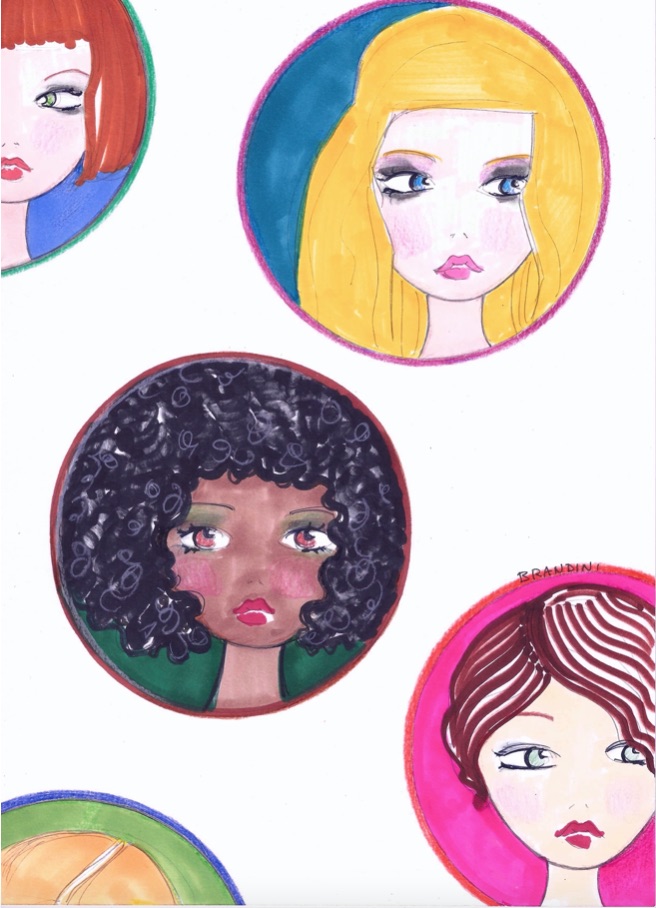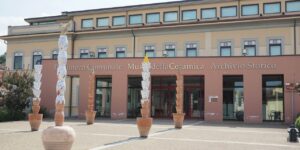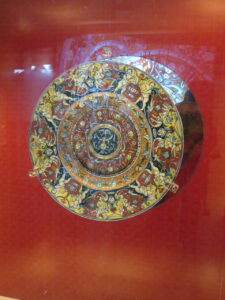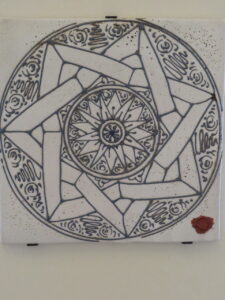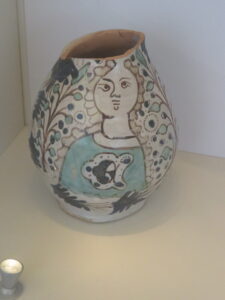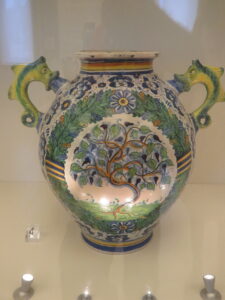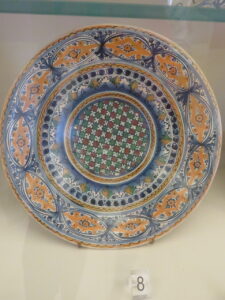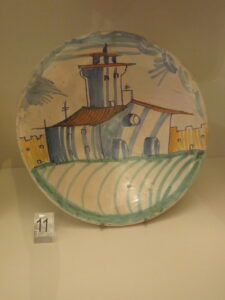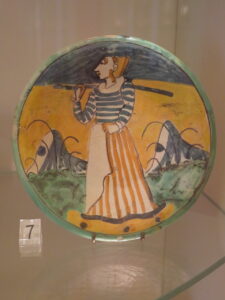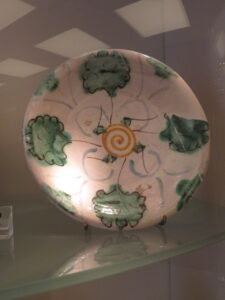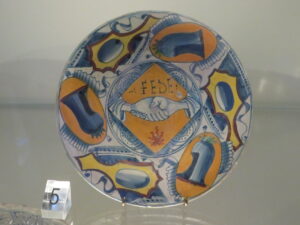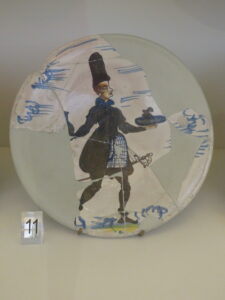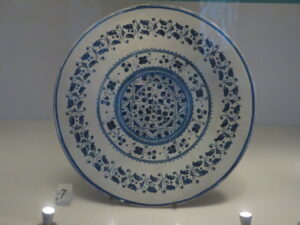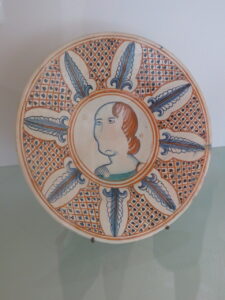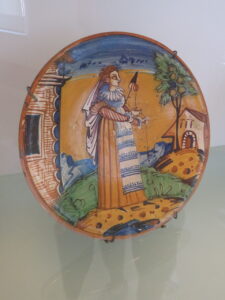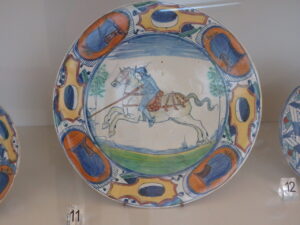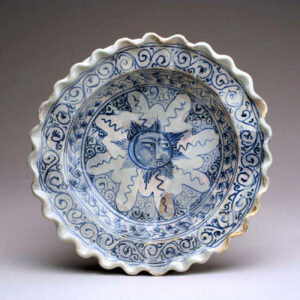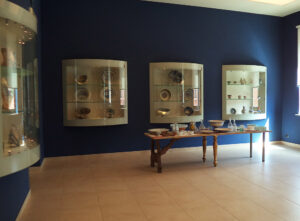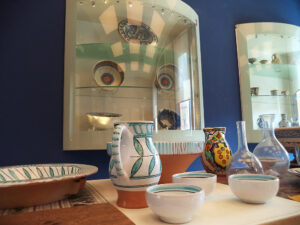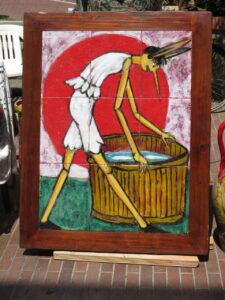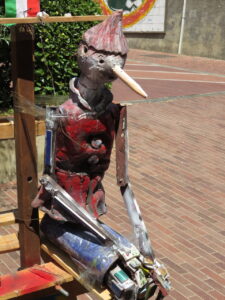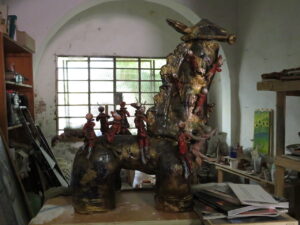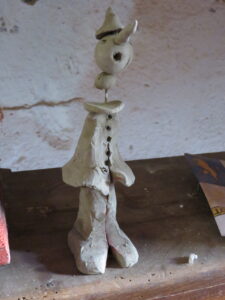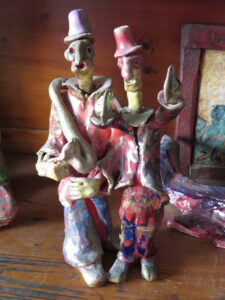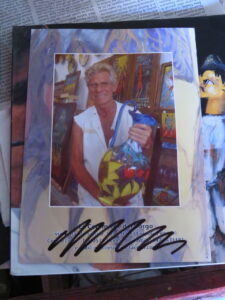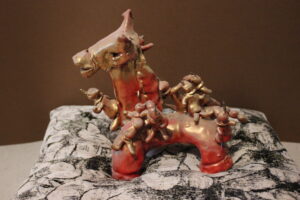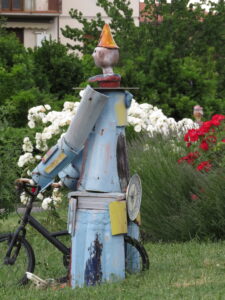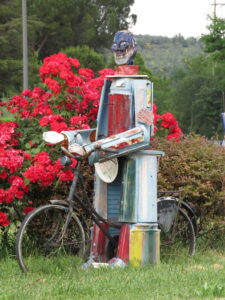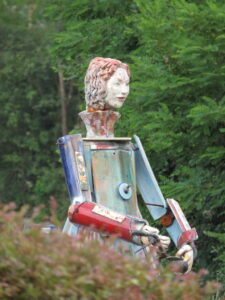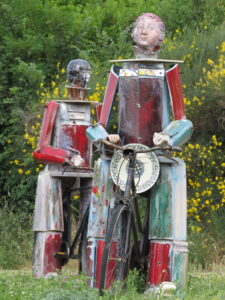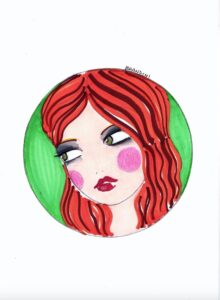Sculpture in front of the entrance to the Ugo La Pietra Museum
Coasters by Beatrice Brandini
Where could a ceramic museum be built if not in Montelupo? A museum whose collection has an inestimable value, with finds ranging from the Middle Ages to the Renaissance, up to the eighteenth century.
Facade of the Montelupo Ceramics Museum
Renaissance plate dated 1509, the majolica was part of the Gustave de Rothschild collection in Paris
Plate
It all started with the discovery of a well, in 1973, during the paving of an ancient road in the castle of Montelupo. Used as a landfill for the nearby furnaces, the Pozzo dei Lavatoi turned out to be a large archaeological deposit that collected the testimonies of the productions.
Mug
Jar
Plate with ovals and rhombuses, Well of works 1500 -1510
The majolicas exhibited in the Museum represent what was an accident for the potters of Montelupo, that is processing waste, which, unable to be sold, were thrown down the drain.
After this extraordinary discovery, it was the Archaeological Superintendence of Tuscany that conducted research, which led, thanks to a very precious and patient restoration work, to the discovery of 300 ceramic specimens attributable to the first quarter of 1500. For this reason the museum boasts almost all of the works exhibited result of excavations carried out, therefore of recovered materials.
Plates
Plate
Today this large museum is divided into two floors and includes a collection of ceramic works ranging from the end of the thirteenth to the eighteenth century, chosen from the more than 5,550 contained in the warehouses. There are eight rooms that deal with as many specific themes, ranging from the medieval canteen, to the shop, from the client to the pharmacy, from the room of animals and flowers, to the one entirely dedicated to children.
Plate
Plate
Plate
As often happens with the Italian artistic and cultural heritage, there are so many important pieces that three museums would probably build abroad. However there are some pieces that alone are worth the visit and the ticket. Like the Mug with Harpy from 1320, the monochrome Damaschino Basin from 1440, the Plate with Ovals and Rhombuses, from 1500.
Plate
Plates
Montelupo majolica is a very important production that dates back to the 13th century, when Florentine families, such as that of the Antinori, commercialized a large quantity of majolica for the international market through the sea ports of Pisa and Livorno. In a short time, Montelupo products spread throughout the Mediterranean, in Greece, Spain, France, even reaching the Atlantic, as well as England and Holland.
Monochrome damask basin, 1440 – 1460
Some internal views of the Montelupo Ceramics Museum
The Montelupo Ceramics Museum also wants to underline the role that the workshops had in the formal and technological construction of Italian majolica, but above all, by visiting it, you can wander with your imagination, imagining that a plate or a jug, were protagonists in the rich tables of Florentine families, in the canteens of hospitals or convents, destined for commercial exchanges in the Mediterranean or transoceanic routes. Incredible stories that tell our story.
A ceramic work and a monumental Pinocchio by Eugenio Taccini
A glimpse of the artist Taccini’s workshop
A heritage that should not be lost, a figure, that of the ceramicist, creative and important, that Montelupo tries to preserve, also through “artist residences”, or collaborations between Italian artists and designers invited to work in local factories to design new lines of production.
A Pinocchio, still in clay, by the artist Eugenio Taccini
A work by Eugenio Taccini
A portrait of Eugenio Taccini
Donkey with Pinocchios by Eugenio Taccini, private collection
Some works by Eugenio Taccini that adorn a roundabout in Montelupo
Finally, I want to mention an artist I discovered some time ago, visiting Montelupo and its museum, namely Eugenio Taccini. Walking through the streets of the city, we were really captivated by his workshop with extraordinary ceramics, an infinity of Pinocchios and Harlequins, along with other fantastic, creative, funny, wonderful characters. We also knew the man, as well as the artist, of infinite humanity and kindness. We didn’t know how to discard what we had chosen for our home, in fact we bought some pieces in a flash, the same pieces that I look at every day and that give me moments of happiness.
Under-plate by Beatrice Brandini
Good life to everyone!
Beatrice


